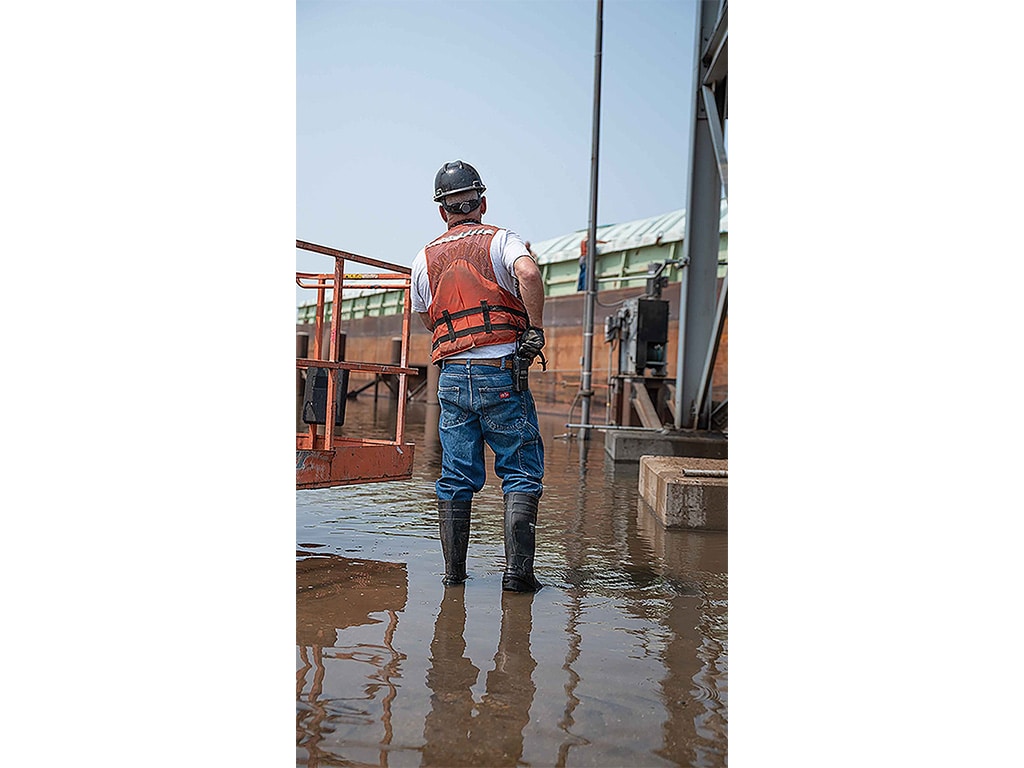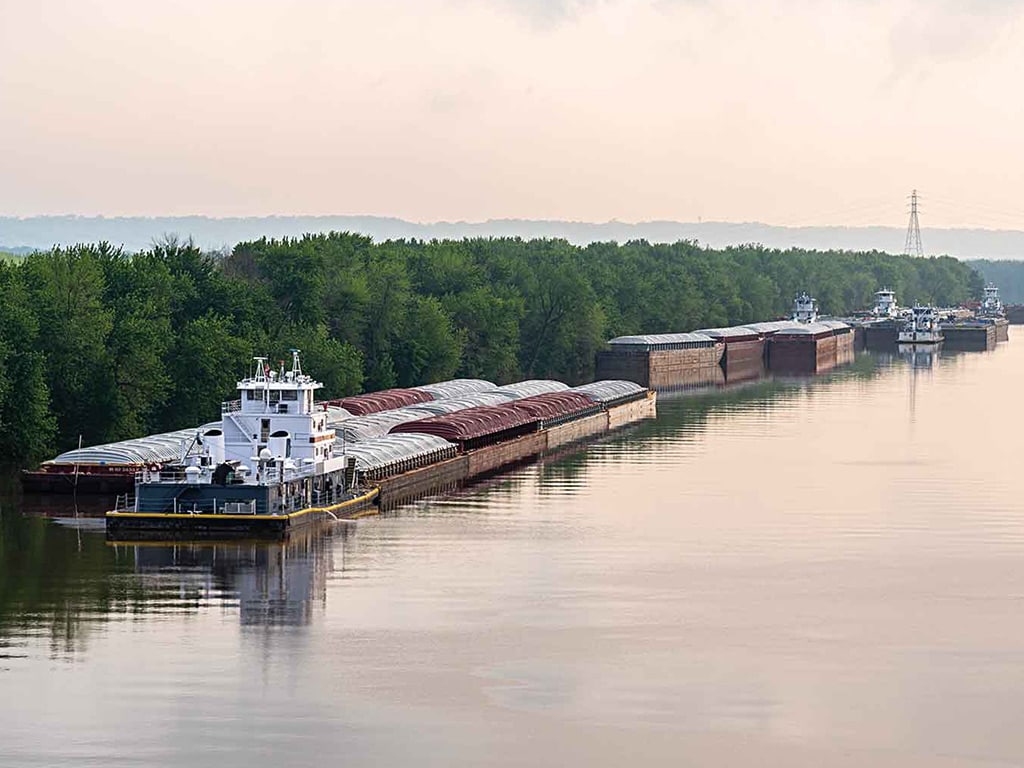Agriculture, Sustainability April 01, 2024
Ups & Downs
What past water level swings have taught us.
by Katie Knapp
My father, a corn and soybean grower in central Illinois, often reminds me "there is no such thing as normal, only an average of everything else." This can be applied to almost anything in life, but weather seems to be a regular topic.
In the past five years we have seen two record floods and two lengthy droughts along the Mississippi River that impacted commodity transportation and prices greatly.
"It is unusual to have back-to-back high-water events and then back-to-back droughts, but we are at the mercy of Mother Nature," says Lisa Parker, U.S. Army Corps of Engineers public affairs director for the Mississippi Valley Division. "Barges have had to lighten their loads, and farmers have had to find alternate routes."
The recent, extreme ups and downs may have been unusual before, but climatologists are saying to prepare for more big swings in the future.
"Climate models and projections for rainfall and droughts for the area that comes into the Mississippi River drainage basin are going toward more extremes. The variability we've been seeing is likely to become more normal," says William 'B.J.' Baule, Ph. D., climatologist at the Southern Regional Climate Center based at Texas A&M.
Baule and his colleagues have developed a tool to help the shipping industry get an aggregated picture of waterway conditions and long-range forecasts.
"The motivation for the Waterway and Drought Tool [on the SRCC website] was to create a dashboard where you could see drought conditions, temperature, and precipitation paired with river flow data and vessel transits," Baule explains.
The year-old tool is currently being used by shipping and commodity industry stakeholders, and the team of climatologists and researchers is using the archived data and machine learning to improve and lengthen the forecasts.
"Water is really our lifeline in the southern plains, and that ties directly to all of agriculture," says Baule. "What we have noticed on the Mississippi has cascading impacts." What to do next, he says, is plan, which the SRCC team is helping policy and commodity groups, Extension and others do. The Army Corps of Engineers is doing the same.
Above. A Marquis employee stands in flood water while loading a barge from their Hennepin, Illinois, ethanol plant on May 31, 2019. Barges wait downstream until the Illinois River levels lower to allow for safe navigation.
Planning at every level. "We are working climate assessment changes into our plans and coming up with possible scenarios," says Daniel Fasching, Mississippi River flow manager for the U.S. Army Corps of Engineers' St. Paul district. "One of the biggest things is to be more flexible and less dogmatic about when these situations may occur during the year. For example, last spring we had the fourth highest flood on record, and a month later the river was back down to drought levels."
On the southern end of the river, Parker says they are taking what they've learned and dredging and building barriers quicker as they anticipate changing conditions. She says everyone is focused on keeping the whole river system open so navigation is impacted as little as possible when weather events do arise.
If more ups and downs do occur as the climatologist project, more planning is also necessary at the farm level to ensure inputs are received on time in the spring and markets are reached efficiently after harvest.
As you pencil out alternative scenarios to protect your income, Jordan Moore, grain - vice president for Bruce Oakley, Inc. (a vertically integrated commodity trading, distribution, and transportation company with locations from Illinois to Louisiana) says, "the only hedge for the farmer—and also the purchaser or merchant—is more space."
Adding storage comes with a rising price tag, but he says, "it is the only way to control exposure to [unfavorable] basis as unprecedented cycles become more regular." Serving more niche and domestic markets is also a good option based on location. ‡
Read More

AGRICULTURE, EDUCATION
SCN Slayers
How scientists are developing new ways to beat this billion dollar pest.

AGRICULTURE, LIVESTOCK/POULTRY
The Trifecta
Prolific plants, warmblood sporthorses, and Highland cattle make for a winning triumvirate.



